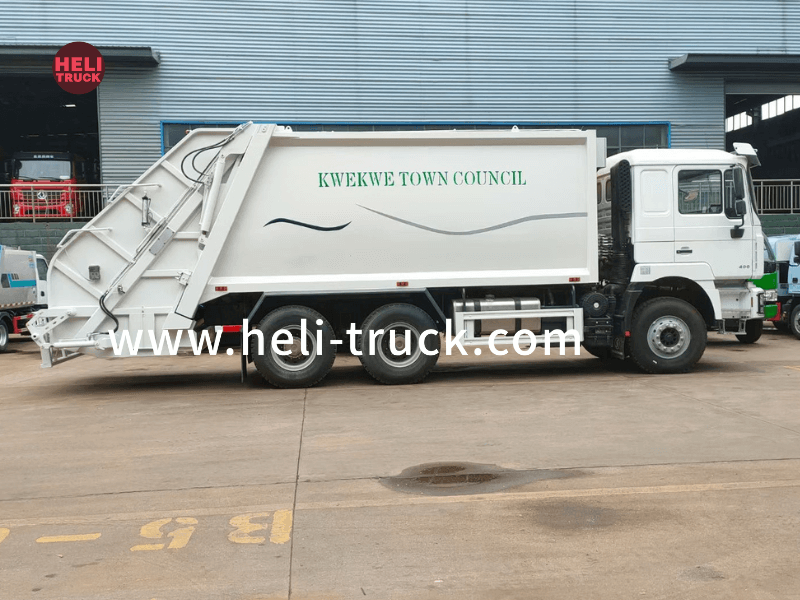Maximizing Efficiency Understanding and Optimizing Garbage Compactor Truck Capacity
Introduction: Garbage compactor trucks play a vital role in waste management systems by collecting and compacting waste materials efficiently. One of the key factors that determine the effectiveness of these trucks is their capacity. The capacity of a garbage compactor truck refers to the volume of waste it can hold and compact before requiring emptying. Understanding the capacity of these trucks and optimizing it can lead to increased efficiency in waste collection and disposal processes. In this article, we will delve into the concept of garbage compactor truck capacity, its importance, factors influencing it, and strategies to maximize its efficiency. Water tank truck storage of Garbage Compactor Truck Capacity: The capacity of a garbage compactor truck is crucial for several reasons. Firstly, a larger capacity allows the truck to collect more waste during each trip, reducing the frequency of emptying and thereby saving time and operational costs. This is particularly important in densely populated urban areas where waste generation is high. Secondly, an appropriately sized compactor truck can help improve the overall efficiency of waste collection routes, leading to reduced fuel consumption and lower carbon emissions. Additionally, optimizing the capacity of compactor trucks can contribute to better resource allocation and improved overall waste management practices. Factors Influencing Garbage Compactor Truck Capacity: Several factors influence the capacity of a garbage compactor truck. The design and size of the compactor body play a significant role in determining how much waste the truck can hold. Trucks with larger bodies and higher compaction ratios can accommodate more waste, while those with smaller bodies may have limited capacity. The type of waste being collected also affects the truck's capacity, as denser materials such as glass or metal may require more space compared to lighter materials like paper or plastic. Furthermore, the compaction mechanism used in the truck can impact its capacity. Trucks equipped with powerful hydraulic compactors can achieve higher compaction ratios, allowing them to fit more waste into the same volume. The loading method employed, whether manual or automated, can also influence the truck's capacity. Automated loading systems are generally more efficient and can help maximize the use of available space in the compactor body. Optimizing Garbage Compactor Truck Capacity: To maximize the efficiency of garbage compactor truck capacity, several strategies can be employed. Firstly, it is essential to select a truck with an appropriate body size and compaction ratio based on the specific requirements of the waste collection operation. Conducting a thorough analysis of waste generation patterns and volume can help determine the optimal truck capacity needed to handle the workload efficiently. Regular maintenance and servicing of compactor trucks are also crucial to ensure optimal performance and maximize capacity. Malfunctioning compaction mechanisms or hydraulic systems can hinder the truck's ability to compact waste effectively, leading to reduced capacity. Implementing a preventive maintenance schedule and promptly addressing any issues can help maintain the truck in peak condition. Moreover, training the operating staff on proper loading techniques and compaction procedures can contribute to maximizing the capacity of garbage compactor trucks. Ensuring that the compactor body is filled evenly and compacted uniformly can help utilize the available space more effectively, allowing the truck to hold more waste.  Lastly, implementing route optimization strategies can further enhance the efficiency of garbage compactor truck capacity. By planning collection routes based on factors such as waste generation rates, traffic conditions, and geographical layout, operators can minimize travel time and maximize the amount of waste collected during each trip. Utilizing technology such as GPS tracking and route planning software can assist in optimizing collection routes and improving overall operational efficiency. Conclusion: Garbage compactor truck capacity is a critical aspect of waste management systems, influencing the efficiency of waste collection and disposal processes. Understanding the factors that influence truck capacity and implementing strategies to optimize it can lead to improved operational efficiency, cost savings, and better resource allocation. By selecting the right truck size, maintaining it regularly, training staff on proper procedures, and optimizing collection routes, waste management operators can maximize the capacity of compactor trucks and enhance overall performance. Ultimately, a well-optimized garbage compactor truck capacity can contribute to more sustainable and effective waste management practices in urban environments.
Lastly, implementing route optimization strategies can further enhance the efficiency of garbage compactor truck capacity. By planning collection routes based on factors such as waste generation rates, traffic conditions, and geographical layout, operators can minimize travel time and maximize the amount of waste collected during each trip. Utilizing technology such as GPS tracking and route planning software can assist in optimizing collection routes and improving overall operational efficiency. Conclusion: Garbage compactor truck capacity is a critical aspect of waste management systems, influencing the efficiency of waste collection and disposal processes. Understanding the factors that influence truck capacity and implementing strategies to optimize it can lead to improved operational efficiency, cost savings, and better resource allocation. By selecting the right truck size, maintaining it regularly, training staff on proper procedures, and optimizing collection routes, waste management operators can maximize the capacity of compactor trucks and enhance overall performance. Ultimately, a well-optimized garbage compactor truck capacity can contribute to more sustainable and effective waste management practices in urban environments.